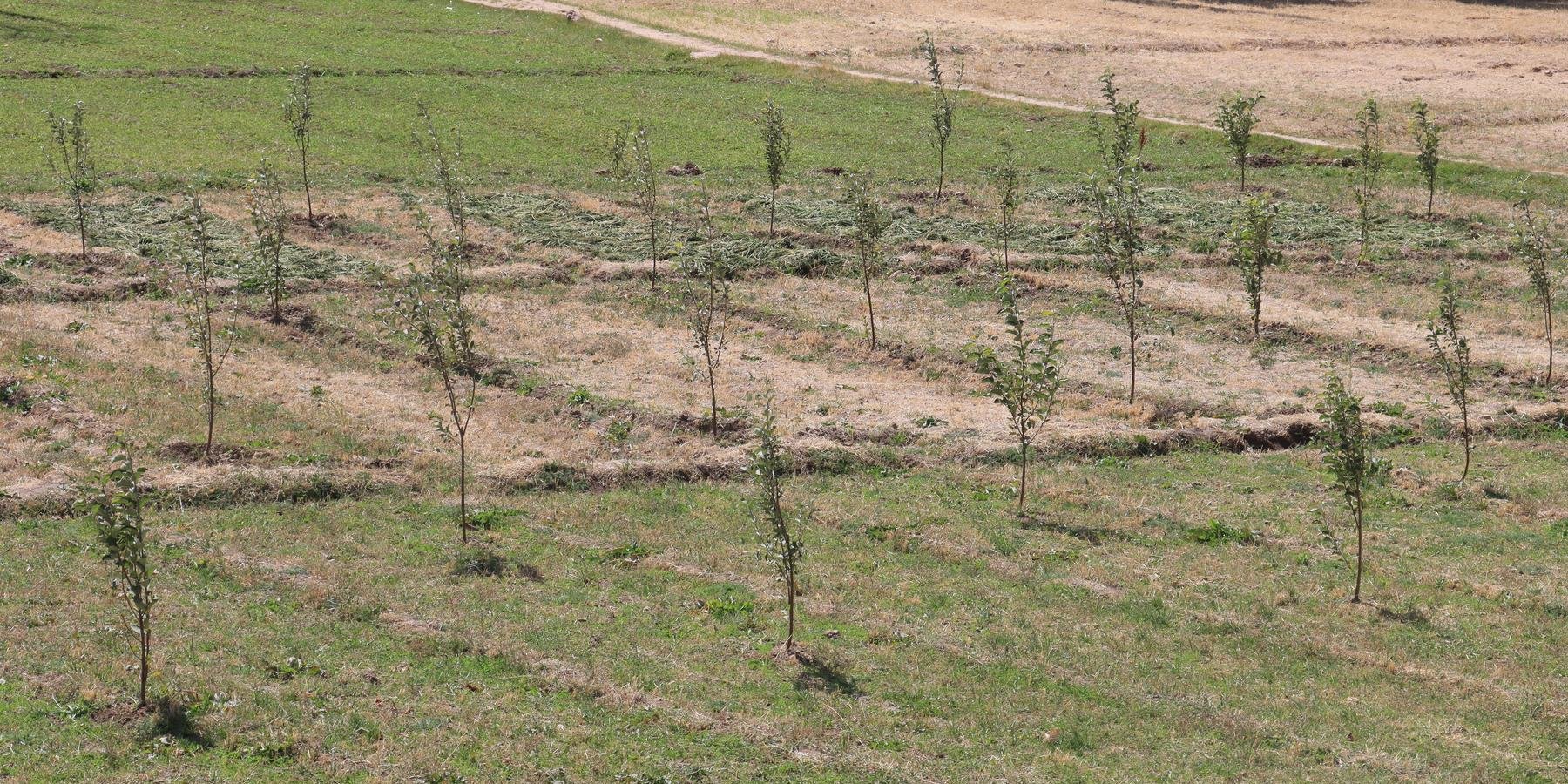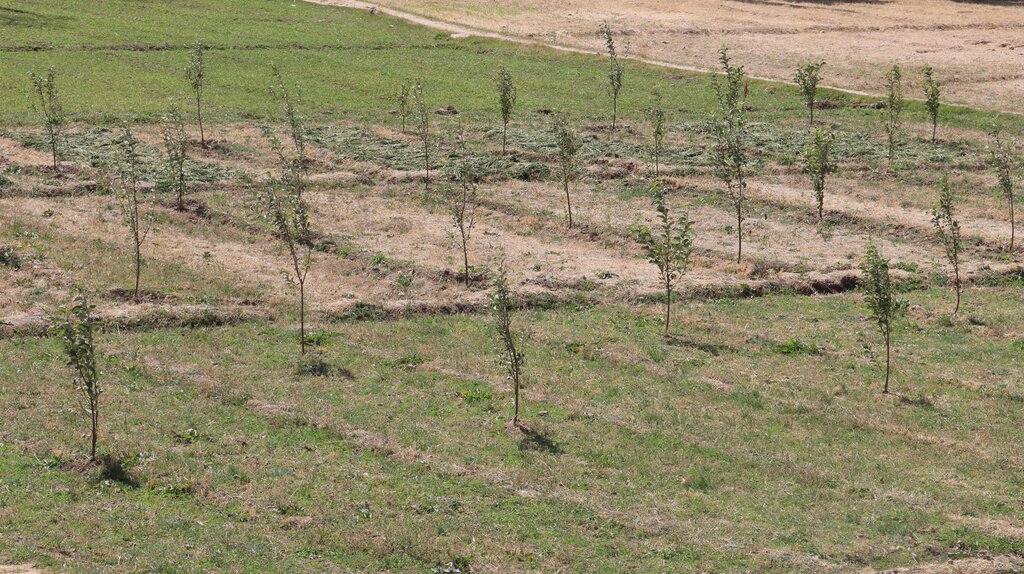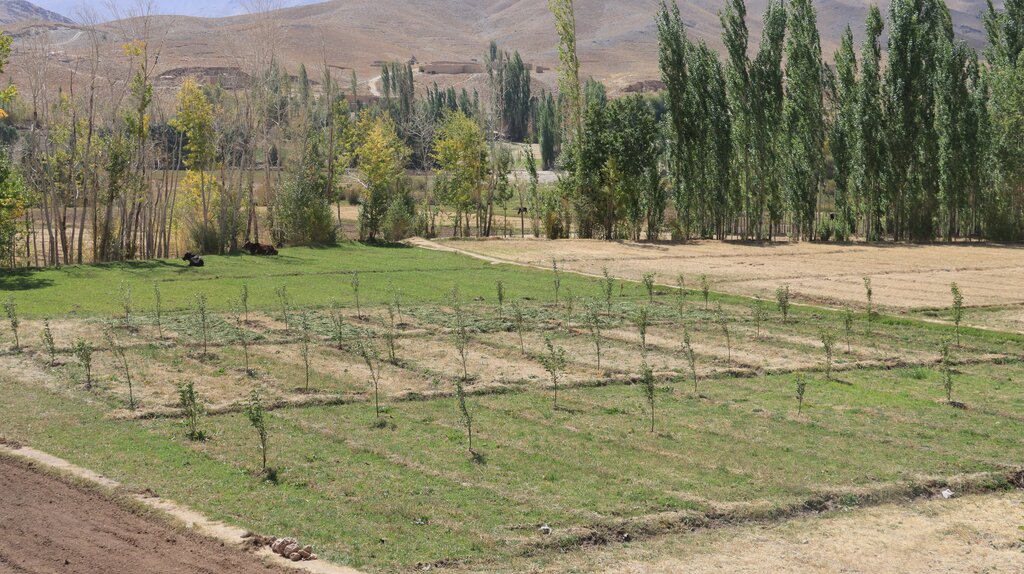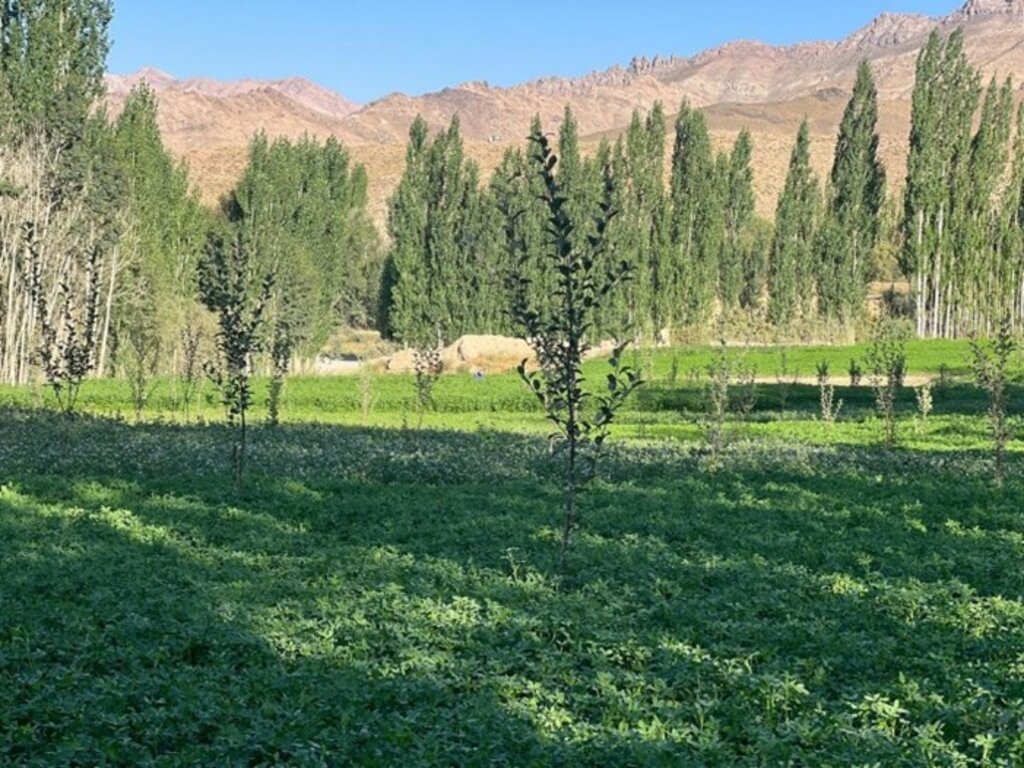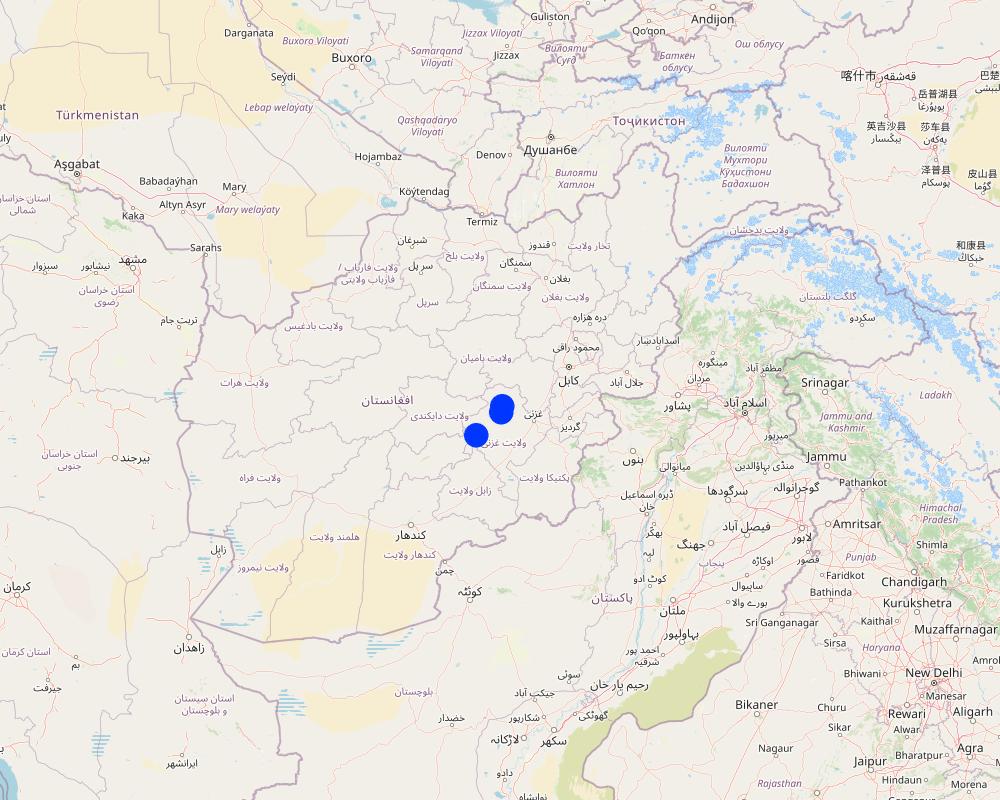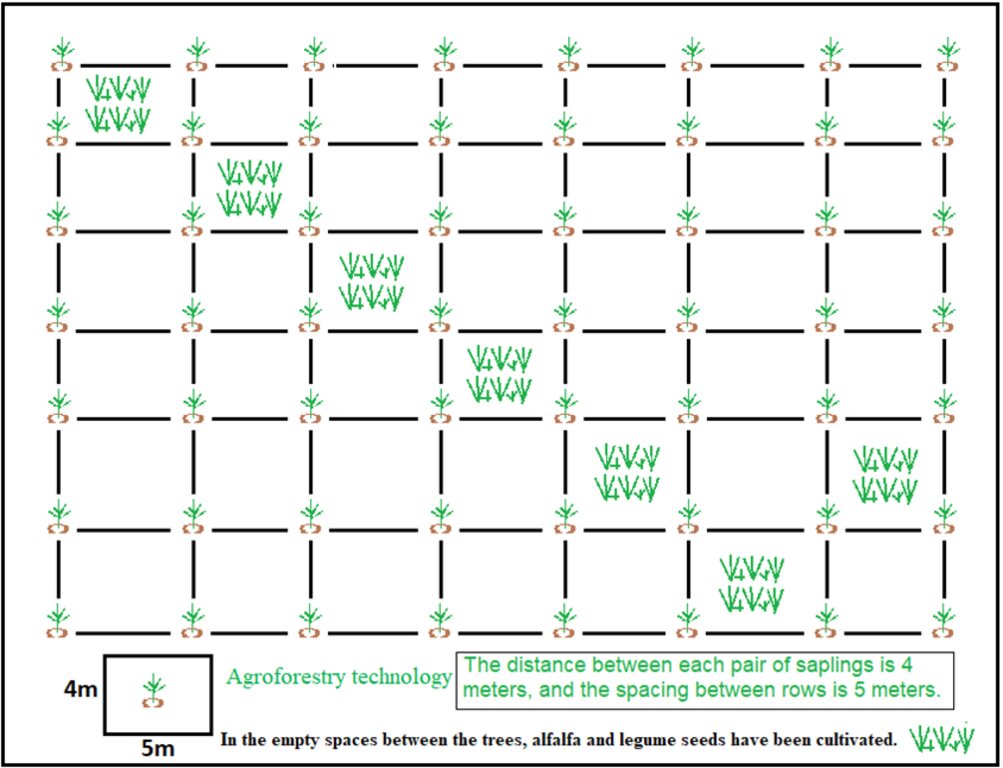Agroforestry to improve soil fertility, water retention, and sustainable income for local communities [อัฟกานิสถาน]
- ผู้สร้างสรรค์:
- การอัพเดท:
- ผู้รวบรวม: Ahmad Zia Jalalzai
- ผู้เรียบเรียง: Mohammad Amin Nesar, Megha bajaj, Mir Wali Khan Lakanwal
- ผู้ตรวจสอบ: Rima Mekdaschi Studer, Illias Animon, Muhammad Ishaq Safi
د خاورې د خاصلخيزۍ ودې، اوبو ذخيره کولو او محلي ټولنو له پاره د دوامداره عايد په موخه د کرنيزې ځنګلدارۍ قطعو جوړول /ایجاد پلات زراعت جنگلی برای بهبود سلامت خاک، نگهداری آب و تأمین درآمد پایدار برای جوامع محلی
technologies_7443 - อัฟกานิสถาน
ดูส่วนย่อย
ขยายทั้งหมด ย่อทั้งหมด1. ข้อมูลทั่วไป
1.2 รายละเอียดที่ติดต่อได้ของผู้รวบรวมและองค์กรที่เกี่ยวข้องในการประเมินและการจัดเตรียมทำเอกสารของเทคโนโลยี
ผู้เชี่ยวชาญ SLM:
ผู้เชี่ยวชาญ SLM:
Andar Ahmadullah
FAO Afghanistan
อัฟกานิสถาน
ผู้ใช้ที่ดิน:
Mohammad Haider
Ghaibi Rangeland Management Association (RMA)
อัฟกานิสถาน
ผู้ใช้ที่ดิน:
Ghullam Sakhi
Qarcha Rangeland Management Association (RMA)
อัฟกานิสถาน
ชื่อของโครงการซึ่งอำนวยความสะดวกในการทำเอกสารหรือการประเมินเทคโนโลยี (ถ้าเกี่ยวข้อง)
Community-based sustainable land and forest management in Afghanistanชื่อขององค์กรซึ่งอำนวยความสะดวกในการทำเอกสารหรือการประเมินเทคโนโลยี (ถ้าเกี่ยวข้อง)
FAO Afghanistan (FAO Afghanistan) - อัฟกานิสถาน1.3 เงื่อนไขการใช้ข้อมูลที่ได้บันทึกผ่านทาง WOCAT
ผู้รวบรวมและวิทยากรหลักยอมรับเงื่อนไขเกี่ยวกับการใช้ข้อมูลที่ถูกบันทึกผ่านทาง WOCAT:
ใช่
1.4 การเปิดเผยเรื่องความยั่งยืนของเทคโนโลยีที่ได้อธิบายไว้
เทคโนโลยีที่ได้อธิบายไว้นี้เป็นปัญหาของความเสื่อมโทรมโทรมของที่ดินหรือไม่ จึงไม่ได้รับการยอมรับว่าเป็นเทคโนโลยีเพื่อการจัดการที่ดินอย่างยั่งยืน:
ไม่ใช่
แสดงความคิดเห็น:
This technology is applied with a focus on land restoration and conservation and is not problamatic with regard to land degradation.
2. การอธิบายลักษณะของเทคโนโลยี SLM
2.1 การอธิบายแบบสั้น ๆ ของเทคโนโลยี
คำจำกัดความของเทคโนโลยี:
The Agroforestry system in Malistan district combines traditional practices with support from the Community-Based Sustainable Land and Forest Management project in Afghanistan. This initiative provides technical support, training, and resources like apple trees, fertilizers, and alfalfa seeds to establish 400 orchards (1,000 m² each). The goal is to enhance community livelihoods by reducing dependence on rangelands, helping to preserve local ecosystems.
2.2 การอธิบายแบบละเอียดของเทคโนโลยี
คำอธิบาย:
The agroforestry system adopted in the mountainous districts of Ghazni province, particularly in Navor and Malistan district is an innovative approach that is transforming the way local farmers cultivate their land. This system integrates agricultural crops, tree cultivation, and livestock farming to maximize land productivity while promoting environmental sustainability. At the heart of the system are apple orchards, alfalfa seeds, and fertilizers, which work together to enhance food security, provide livestock feed, and improve soil fertility. Supported by modern agricultural techniques, the project includes a total of 400 orchards, each covering 1,000 square meters, helping to alleviate pressure on overgrazed rangelands while improving local livelihoods.
This agroforestry method is particularly well-suited to Ghazni’s rugged terrain, where farming communities rely heavily on livestock and rangelands for sustenance. However, the region’s dry climate, frequent overgrazing, and ongoing land degradation have made traditional farming increasingly unsustainable. By introducing apple trees and alfalfa cultivation, farmers now have an alternative source of income and animal feed while actively restoring degraded lands. Alfalfa serves as a nutrient-rich fodder for livestock, and in return, livestock manure is used as fertilizer, creating a self-sustaining agricultural cycle that enhances soil health.
Beyond its environmental benefits, this system plays a crucial role in improving livelihoods. By diversifying agricultural production, it enhances food security and generates additional income for local farmers. More importantly, it helps alleviate the burden on fragile rangelands by offering an alternative source of livestock feed, reducing overgrazing and preventing further land degradation. Through natural nutrient recycling, alfalfa provides essential fodder for livestock, while their manure replenishes soil nutrients, ensuring long-term soil fertility.
To successfully implement and maintain this system, several key activities and inputs are required. Local farmers receive specialized training and technical support to equip them with the necessary skills. Essential supplies, including apple saplings, fertilizers, and alfalfa seeds, are provided to help establish the orchards. Additionally, proper maintenance, such as irrigation, pruning, and weed control, ensures that the orchards remain productive. Soil and water conservation efforts, such as constructing contour banks and water diversion structures, further safeguard the land against erosion and water loss.
The impact of this technology extends far beyond the fields. Environmentally, it significantly reduces soil erosion, improves water retention, and restores soil health. Economically, it increases household income by boosting apple production and generating sales from alfalfa as livestock feed. Socially, it strengthens community resilience by offering a reliable source of food and income, while encouraging the adoption of sustainable farming practices.
While many farmers appreciate the system for its cost-effectiveness, sustainability, and diverse benefits, some challenges remain. Because of the duration for fruit production of apple trees are typically taking three to four years to bear fruit, patience and long-term planning is crucial. Additionally, the dry climate means that farmers must invest extra time and effort in irrigation, especially during drought periods, to ensure optimal growth and fruit yield. Despite these challenges, the agroforestry system in Malistan and Navor presents a promising solution for sustainable land management and rural development.
2.3 รูปภาพของเทคโนโลยี
2.4 วีดีโอของเทคโนโลยี
ความคิดเห็น/อธิบายสั้นๆ:
Artificial reseeding plays a vital role in the restoration of degraded rangeland ecosystems. Reseeding of local palatable fodder species in degraded rangeland is a restoration technique aimed at reintroducing native plants that support soil health and local biodiversity. This process enhances forage availability for grazing animals, stabilizes soil, and helps combat desertification by promoting sustainable vegetation cover. By using palatable, locally adapted species, artificial reseeding improves the health and productivity of degraded rangeland ecosystem.
วันที่:
20 october 2023
สถานที่:
Malistan district Mokly village.
ชื่อผู้ถ่ายวีดีโอ:
Ahmad Zia Jalalzai
2.5 ประเทศภูมิภาค หรือสถานที่ตั้งที่เทคโนโลยีได้นำไปใช้และได้รับการครอบคลุมโดยการประเมินนี้
ประเทศ:
อัฟกานิสถาน
ภูมิภาค/รัฐ/จังหวัด:
Southeastern Ghazni province
ข้อมูลจำเพาะเพิ่มเติมของสถานที่ตั้ง :
The technology is applied in 44 villages through 7 Rangeland Management Associations (RMAs). Hemat and Faqir are sample villages reflected in the map.
ระบุการกระจายตัวของเทคโนโลยี:
- ใช้ ณ จุดที่เฉพาะเจาะจงหรือเน้นไปยังบริเวณพื้นที่ขนาดเล็ก
Is/are the technology site(s) located in a permanently protected area?
ไม่ใช่
แสดงความคิดเห็น:
This project established 400 agroforestry plots (for 400 land users); the coordinates represent the samples locations for 400 orchards.
Map
×2.6 วันที่การดำเนินการ
ระบุปีที่ใช้:
2022
2.7 คำแนะนำของเทคโนโลยี
ให้ระบุว่าเทคโนโลยีถูกแนะนำเข้ามาอย่างไร:
- ทางโครงการหรือจากภายนอก
ความคิดเห็น (ประเภทของโครงการ เป็นต้น) :
The agroforestry system was introduced as an innovative, community-driven approach, offering an environmentally friendly alternative. This initiative was developed in response to the community's call for sustainable solutions that enhance livelihoods while preserving natural resources.
The agroforestry system integrates apple tree plantation with alfalfa intercropping, enhancing land productivity and sustainability by providing both fruit and forage. This technology improves livelihoods and promotes soil fertility and moisture retention for long-term environmental benefits
3. การจัดประเภทของเทคโนโลยี SLM
3.1 วัตถุประสงค์หลักของเทคโนโลยี
- ปรับปรุงการผลิตให้ดีขึ้น
- ลด ป้องกัน ฟื้นฟู การเสื่อมโทรมของที่ดิน
- ชะลอการเปลี่ยนแปลงภูมิอากาศของโลกและผลกระทบ
- สร้างผลกระทบทางด้านเศรษฐกิจที่เป็นประโยชน์
- สร้างผลกระทบทางด้านสังคมที่เป็นประโยชน์
3.2 ประเภทของการใช้ที่ดินในปัจจุบันที่ได้นำเทคโนโลยีไปใช้
Land use mixed within the same land unit:
ใช่
Specify mixed land use (crops/ grazing/ trees):
- Agro-pastoralism (incl. integrated crop-livestock)
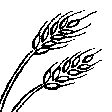
พื้นที่ปลูกพืช
- การปลูกพืชยืนต้นที่ไม่มีเนื้อไม้
Perennial (non-woody) cropping - Specify crops:
- flower crops - perennial
จำนวนของฤดูเพาะปลูกต่อปี:
- 2
ระบุ:
summer and fall season
Is intercropping practiced?
ใช่
If yes, specify which crops are intercropped:
Alfaalfa is mainly used for intercropping
Is crop rotation practiced?
ไม่ใช่

ทุ่งหญ้าเลี้ยงสัตว์
ทุ่งหญ้าเลี้ยงสัตว์ที่มีการจัดการแบบเข้มข้นหรือการผลิตอาหารสัตว์:
- ตัดแล้วขนไป / ไม่มีการปล่อยแทะเล็มเอง (Cut-and-carry / zero grazing)
Animal type:
- cattle - dairy and beef (e.g. zebu)
Is integrated crop-livestock management practiced?
ใช่
ถ้าใช่ ระบุ:
Animal manure is added in the fall season
ผลิตภัณฑ์และบริการ:
- economic security, investment prestige
Species:
cattle - dairy and beef (e.g. zebu)
Count:
1345
แสดงความคิดเห็น:
In autumn, people in the community graze their land with animals like cattle, sheep and goats. To manage and control the grazing, they use stakes and ropes to fence a specific area of land and ensure that the saplings are not damaged.
Planting of fruit trees helps to reduce pressure on rangeland grasses and shrubs to support landscape restoration.
Most land users plant apple trees and alfalfa. Some land users, who do not have animals, cultivate legumes instead of alfalfa.
3.3 Has land use changed due to the implementation of the Technology?
Has land use changed due to the implementation of the Technology?
- Yes (Please fill out the questions below with regard to the land use before implementation of the Technology)
Land use mixed within the same land unit:
ใช่
Specify mixed land use (crops/ grazing/ trees):
- Agro-pastoralism (incl. integrated crop-livestock)

พื้นที่ปลูกพืช
- การปลูกพืชยืนต้นที่ไม่มีเนื้อไม้
Perennial (non-woody) cropping - Specify crops:
- flower crops - perennial
Is intercropping practiced?
ใช่
If yes, specify which crops are intercropped:
Earlier, wheat was planted only on the cropland and the only grazing land that was overgrazed and it became degraded. Now there is a mixed system agro-pastoralism in place due to the application of the technology.
Is crop rotation practiced?
ไม่ใช่

ทุ่งหญ้าเลี้ยงสัตว์
ทุ่งหญ้าเลี้ยงสัตว์ที่มีการจัดการแบบเข้มข้นหรือการผลิตอาหารสัตว์:
- ตัดแล้วขนไป / ไม่มีการปล่อยแทะเล็มเอง (Cut-and-carry / zero grazing)
Animal type:
- cattle - dairy and beef (e.g. zebu)
Is integrated crop-livestock management practiced?
ไม่ใช่
แสดงความคิดเห็น:
Most land users plant apple trees and alfalfa seeds. Some land users, who do not have animals, cultivate legume intercropping instead of alfalfa.
3.4 การใช้น้ำ
การใช้น้ำของที่ดินที่มีการใช้เทคโนโลยีอยู่:
- น้ำฝนร่วมกับการชลประทาน
แสดงความคิดเห็น:
Out of the 400 agroforestry plots, some have full water availability, while others have 80% water availability. About 10% of the agroforestry plots receive only 40% to 60% of the required water. The saplings are mainly irrigated by spring rainfall. In a few plots, additional irrigation is provided two to three times during the warm season by transporting water from the canal using animals.
3.5 กลุ่ม SLM ที่ตรงกับเทคโนโลยีนี้
- การจัดการปศุสัตว์และทุ่งหญ้าเลี้ยงสัตว์
- การจัดการปลูกพืชร่วมกับปศุสัตว์
- การจัดการความอุดมสมบรูณ์ของดินแบบผสมผสาน
3.6 มาตรการ SLM ที่ประกอบกันเป็นเทคโนโลยี
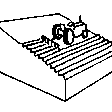
มาตรการจัดการพืช
- A2: อินทรียวัตถุในดิน/ความอุดมสมบูรณ์ในดิน
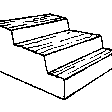
มาตรการอนุรักษ์ด้วยโครงสร้าง
- S2: ทำนบ เขื่อนดิน

มาตรการอนุรักษ์ด้วยการจัดการ
- M6: การจัดการของเสีย (การทำ รีไซเคิล การเอากลับมาใช้ใหม่หรือการลดปริมาณ)
แสดงความคิดเห็น:
Residue management of trees is used for fuel, and alfalfa is utilized as livestock fodder in winter.
3.7 รูปแบบหลักของการเสื่อมโทรมของที่ดินที่ได้รับการแก้ไขโดยเทคโนโลยี
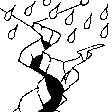
การกัดกร่อนของดินโดยน้ำ
- Wt (Loss of topsoil): การสูญเสียดินชั้นบนหรือการกัดกร่อนที่ผิวดิน

การกัดกร่อนของดินโดยลม
- Et (Loss of topsoil): การสูญเสียดินชั้นบน
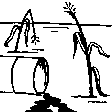
การเสื่อมโทรมของดินทางด้านเคมี
- Cn (Fertility decline): ความอุดมสมบูรณ์และปริมาณอินทรียวัตถุในดินถูกทำให้ลดลงไป (ไม่ได้เกิดจากสาเหตุการกัดกร่อน)
- Ca (Acidification): การเกิดกรด
- Cp (Soil pollution): มลพิษในดิน
- Cs (Salinization/alkalinization): การสะสมเกลือหรือการทำให้เป็นด่าง
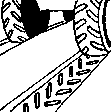
การเสื่อมโทรมของดินทางด้านกายภาพ
- Pc (Compaction): การอัดแน่น
- Pk (Slaking and crusting): การอุดตันของช่องว่างในดินหรือรูพรุน
- Pw (Waterlogging): ภาวะชุ่มน้ำ
- Ps (Subsidence of organic soils): การยุบตัวของดินอินทรีย์ การทรุดตัวของดิน
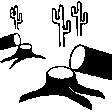
การเสื่อมโทรมของดินทางด้านชีวภาพ
- Bc (Reduction of vegetation cover): การลดลงของจำนวนพืชที่ปกคลุมดิน
- Bh (Loss of habitat): การสูญเสียแหล่งที่อยู่
- Bq (Quantity/biomass decline): การลดลงของปริมาณหรือมวลชีวภาพ
- Bs (Quality and species composition): องค์ประกอบหรือความหลากหลายทางคุณภาพและชนิดพันธุ์ลดลง
- Bl (Loss of soil life): การสูญเสียสิ่งมีชีวิตในดิน
- Bp (Increase of pests/diseases): การเพิ่มขึ้นของศัตรูพืชและโรคพืช
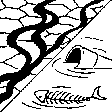
การเสื่อมโทรมของน้ำ
- Ha (Aridification): การเกิดความแห้งแล้ง
- Hg (Change in groundwater): การเปลี่ยนแปลงของน้ำบาดาลหรือระดับน้ำในแอ่งน้ำบาดาล
- Hp (Decline of surface water quality): การลดลงของคุณภาพน้ำที่ผิวดิน
- Hw (Reduction of the buffering capacity of wetland): การลดลงของความทนทานต่อการเปลี่ยนแปลง ของพื้นที่ชุ่มน้ำ
3.8 การป้องกัน การลดลง หรือการฟื้นฟูความเสื่อมโทรมของที่ดิน
ระบุเป้าหมายของเทคโนโลยีกับความเสื่อมโทรมของที่ดิน:
- ลดความเสื่อมโทรมของดิน
- ฟื้นฟูบำบัดที่ดินที่เสื่อมโทรมลงอย่างมาก
แสดงความคิดเห็น:
This project reduced the land degradation by applying this agroforestry technology.
4. ข้อมูลจำเพาะด้านเทคนิค กิจกรรมการนำไปปฏิบัติใช้ ปัจจัยนำเข้า และค่าใช้จ่าย
4.1 แบบแปลนทางเทคนิคของเทคโนโลยี
ข้อมูลจำเพาะด้านเทคนิค (แบบแปลนทางเทคนิคของเทคโนโลยี):
Saplings are planted in plotted areas with widths ranging from 4 to 5 meters. The outlines of the plots measure 40 × 50 meters, depending on the land structure. The spacing between saplings is 4 meters, with 5 meters between rows. Alfalfa and legume seeds are planted in the gaps. Small plots of 0.1 hectares were used, each containing 50 saplings.
ผู้เขียน:
Ahmad Zia Jalalzai
วันที่:
16/10/2024
4.2 ข้อมูลทั่วไปเกี่ยวกับการคำนวณปัจจัยนำเข้าและค่าใช้จ่าย
ให้ระบุว่าค่าใช้จ่ายและปัจจัยนำเข้าได้รับการคำนวณอย่างไร:
- ต่อพื้นที่ที่ใช้เทคโนโลยี
ระบุขนาดและหน่วยพื้นที่:
0.1 ha
ระบุสกุลเงินที่ใช้คำนวณค่าใช้จ่าย:
- USD
ระบุค่าเฉลี่ยของค่าจ้างในการจ้างแรงงานต่อวัน:
5 USD
4.3 กิจกรรมเพื่อการจัดตั้ง
| กิจกรรม | Timing (season) | |
|---|---|---|
| 1. | Survey and site selection follow by feasibility study | December to January |
| 2. | Procurement sapling and equipment | December and January |
| 3. | Levelling plots, cleaning from weeds | March |
| 4. | Designing layout | March |
| 5. | Digging planting pits | March |
| 6. | Planating apple saplings | spring |
| 7. | Irrigating | April to September |
| 8. | Training and pruning of orchard | October and Noverber |
4.4 ค่าใช้จ่ายของปัจจัยนำเข้าที่จำเป็นสำหรับการจัดตั้ง
| ปัจจัยนำเข้า | หน่วย | ปริมาณ | ค่าใช้จ่ายต่อหน่วย | ค่าใช้จ่ายทั้งหมดต่อปัจจัยนำเข้า | %ของค่าใช้จ่ายที่ก่อให้เกิดขึ้นโดยผู้ใช้ที่ดิน | |
|---|---|---|---|---|---|---|
| แรงงาน | Labour for preparation of plots levelling, digging pits and cleaning weeds | Person/day | 10.0 | 5.0 | 50.0 | 100.0 |
| แรงงาน | Labour for plantation | Person/day | 5.0 | 8.0 | 40.0 | 100.0 |
| อุปกรณ์ | Shovel | Number | 1.0 | 4.0 | 4.0 | 100.0 |
| อุปกรณ์ | Rope | Meter | 1.0 | 2.0 | 2.0 | 100.0 |
| อุปกรณ์ | Hoe | Number | 1.0 | 3.0 | 3.0 | 100.0 |
| อุปกรณ์ | Pruning scissors | Number | 1.0 | 10.0 | 10.0 | 100.0 |
| อุปกรณ์ | Wheelbarrow | Number | 1.0 | 1.0 | 1.0 | 100.0 |
| วัสดุด้านพืช | Alfalfa seeds | Kg | 4.0 | 3.0 | 12.0 | |
| วัสดุด้านพืช | Apple sapling | Number | 50.0 | 1.0 | 50.0 | |
| ปุ๋ยและสารฆ่า/ยับยั้งการเจริญเติบโตของสิ่งมีชีวิต (ไบโอไซด์) | DAP | Kg | 25.0 | 3.0 | 75.0 | |
| ปุ๋ยและสารฆ่า/ยับยั้งการเจริญเติบโตของสิ่งมีชีวิต (ไบโอไซด์) | Urea | Kg | 25.0 | 1.0 | 25.0 | |
| ค่าใช้จ่ายทั้งหมดของการจัดตั้งเทคโนโลยี | 272.0 | |||||
| Total costs for establishment of the Technology in USD | 272.0 | |||||
4.5 การบำรุงรักษาสภาพหรือกิจกรรมที่เกิดขึ้นเป็นประจำ
| กิจกรรม | ช่วงระยะเวลา/ความถี่ | |
|---|---|---|
| 1. | Applying manure for growth of crops and trees(refers to using organic animal waste (such as cow, horse, chicken, or sheep manure) to improve soil fertility and promote plant growth.) | in fall season |
| 2. | Disc ploughing and harrowing | in fall season |
| 3. | Chemical fertilizer application to crops | at the time of observing needs |
| 4. | Pest management with chemicals | in spring season |
| 5. | Irrigation of sapling | As per needed time |
| 6. | Mulching trees (humus cover)refers to the practice of covering the soil around trees with organic material, such as humus, straw, leaves, wood chips, or compost. | In a hot summer and lack of water, dry year |
| 7. | Pruning trees | in spring season |
| 8. | Operation and maintenance | spring, summer and fall |
แสดงความคิดเห็น:
Inputs needed for maintenance/ recurrent activities (per year)
4.6 ค่าใช้จ่ายของปัจจัยนำเข้าและกิจกรรมที่เกิดขึ้นเป็นประจำที่ต้องการการบำรุงรักษา (ต่อปี)
| ปัจจัยนำเข้า | หน่วย | ปริมาณ | ค่าใช้จ่ายต่อหน่วย | ค่าใช้จ่ายทั้งหมดต่อปัจจัยนำเข้า | %ของค่าใช้จ่ายที่ก่อให้เกิดขึ้นโดยผู้ใช้ที่ดิน | |
|---|---|---|---|---|---|---|
| แรงงาน | Unskilled labour | Person/day | 20.0 | 5.0 | 100.0 | 100.0 |
| แรงงาน | ploughing | person/day | 2.0 | 5.0 | 10.0 | |
| แรงงาน | apply of fertilizer and manure | person/day | 2.0 | 5.0 | 10.0 | |
| แรงงาน | form pest management | person/day | 3.0 | 5.0 | 15.0 | |
| แรงงาน | planting of annual crops / perennial alfalfa | person/day | 2.0 | 5.0 | 10.0 | |
| แรงงาน | Uprooting dry sapling and replacing to fresh sapling. | Number | 2.0 | 1.0 | 2.0 | 100.0 |
| อุปกรณ์ | Shovel | Number | 1.0 | 3.0 | 3.0 | 100.0 |
| ปุ๋ยและสารฆ่า/ยับยั้งการเจริญเติบโตของสิ่งมีชีวิต (ไบโอไซด์) | Organic fertilizer | M3 | 1.0 | 10.0 | 10.0 | 100.0 |
| ปุ๋ยและสารฆ่า/ยับยั้งการเจริญเติบโตของสิ่งมีชีวิต (ไบโอไซด์) | DAP | |||||
| ปุ๋ยและสารฆ่า/ยับยั้งการเจริญเติบโตของสิ่งมีชีวิต (ไบโอไซด์) | Urea | |||||
| ปุ๋ยและสารฆ่า/ยับยั้งการเจริญเติบโตของสิ่งมีชีวิต (ไบโอไซด์) | Pesticides | |||||
| ค่าใช้จ่ายทั้งหมดของการบำรุงรักษาสภาพเทคโนโลยี | 160.0 | |||||
| Total costs for maintenance of the Technology in USD | 160.0 | |||||
แสดงความคิดเห็น:
After establishment, all responsibilities for maintenance, operations activity, care, and management belongs to land users.
4.7 ปัจจัยสำคัญที่สุดที่มีผลกระทบต่อค่าใช้จ่าย
ปัจจัยสำคัญที่สุดที่มีผลกระทบต่อค่าใช้จ่ายต่างๆ:
Usually, the land users are farmers, and all the activities are performed by the land users. The project team provides technical support and capacity building. The most important factors affecting the cost in the project are the materials’ accessibility in the field such as saplings, chemical fertilizer, and pesticides.
5. สิ่งแวดล้อมทางธรรมชาติและของมนุษย์
5.1 ภูมิอากาศ
ฝนประจำปี
- < 250 ม.ม.
- 251-500 ม.ม.
- 501-750 ม.ม.
- 751-1,000 ม.ม.
- 1,001-1,500 ม.ม.
- 1,501-2,000 ม.ม.
- 2,001-3,000 ม.ม.
- 3,001-4,000 ม.ม.
- > 4,000 ม.ม.
เขตภูมิอากาศเกษตร
- กึ่งแห้งแล้ง
5.2 สภาพภูมิประเทศ
ค่าเฉลี่ยความลาดชัน:
- ราบเรียบ (0-2%)
- ลาดที่ไม่ชัน (3-5%)
- ปานกลาง (6-10%)
- เป็นลูกคลื่น (11-15%)
- เป็นเนิน (16-30%)
- ชัน (31-60%)
- ชันมาก (>60%)
ธรณีสัณฐาน:
- ที่ราบสูง/ที่ราบ
- สันเขา
- ไหล่เขา
- ไหล่เนินเขา
- ตีนเนิน
- หุบเขา
ระดับความสูง:
- 0-100 เมตร
- 101-500 เมตร
- 501-1,000 เมตร
- 1,001-1,500 เมตร
- 1,501-2,000 เมตร
- 2,001-2,500 เมตร
- 2,501-3,000 เมตร
- 3,001-4,000 เมตร
- > 4,000 เมตร
ความคิดเห็นและข้อมูลจำเพาะเพิ่มเติมเรื่องสภาพภูมิประเทศ:
As the technology have been applied in a 400 different topography plots, some of the plots are in a flatted, gentle and hilly slop and most of the technologies are applied in flatted area.
5.3 ดิน
ค่าเฉลี่ยความลึกของดิน:
- ตื้นมาก (0-20 ซ.ม.)
- ตื้น (21-50 ซ.ม.)
- ลึกปานกลาง (51-80 ซ.ม.)
- ลึก (81-120 ซ.ม.)
- ลึกมาก (>120 ซ.ม.)
เนื้อดิน (ดินชั้นบน):
- ปานกลาง (ดินร่วน ทรายแป้ง)
เนื้อดินล่าง (> 20 ซ.ม.ต่ำจากผิวดิน):
- ปานกลาง (ดินร่วน ทรายแป้ง)
อินทรียวัตถุในดิน:
- ปานกลาง (1-3%)
(ถ้ามี) ให้แนบคำอธิบายเรื่องดินแบบเต็มหรือระบุข้อมูลที่มีอยู่ เช่น ชนิดของดิน ค่า pH ของดินหรือความเป็นกรดของดิน ความสามารถในการแลกเปลี่ยนประจุบวก ไนโตรเจน ความเค็ม เป็นต้น:
In Ghazni province, the primary soil types include Aridisols in arid regions, Entisols on slopes, Sierozems in desert areas, and fertile Alluvial soils in valleys that support agriculture. Soil pH levels in the region range from 6.33 (slightly acidic) to 8.52 (alkaline), indicating varying degrees of acidity and alkalinity. The Cation Exchange Capacity (CEC), nitrogen levels, and salinity vary across these soil types, influencing agricultural productivity and land management practices. For more detailed information, including specific nutrient content and soil characteristics, resources such as the FAO’s Agro-Climatic Atlas can be consulted.
5.4 ความเป็นประโยชน์และคุณภาพของน้ำ
ระดับน้ำใต้ดิน:
5-50 เมตร
น้ำไหลบ่าที่ผิวดิน:
เกินพอ
คุณภาพน้ำ (ที่ยังไม่ได้บำบัด):
เป็นน้ำเพื่อการดื่มที่ดี
Water quality refers to:
both ground and surface water
ความเค็มของน้ำเป็นปัญหาหรือไม่:
ไม่ใช่
กำลังเกิดน้ำท่วมในพื้นที่หรือไม่:
ใช่
บ่อยครั้ง:
เป็นครั้งเป็นคราว
ความคิดเห็นและข้อมูลจำเพาะเพิ่มเติมเรื่องคุณภาพและปริมาณน้ำ:
In years with heavy snowfall, water availability increases, and springs are replenished. Conversely, during drought years, water resources decrease significantly. From July to September, a water shortage is commonly experienced, prompting farmers to transport water from canals using animals. Additionally, some farmers rely on groundwater specifically for irrigating saplings. This seasonal variation in water supply is critical for agricultural practices in the province.
5.5 ความหลากหลายทางชีวภาพ
ความหลากหลายทางชนิดพันธุ์:
- ปานกลาง
ความหลากหลายของแหล่งที่อยู่:
- ปานกลาง
5.6 ลักษณะของผู้ใช้ที่ดินที่นำเทคโนโลยีไปปฏิบัติใช้
อยู่กับที่หรือเร่ร่อน:
- อยู่กับที่
แนวทางการตลาดของระบบการผลิต:
- mixed (subsistence/ commercial)
รายได้ที่มาจากนอกฟาร์ม:
- 10-50% ของรายได้ทั้งหมด
ระดับของความมั่งคั่งโดยเปรียบเทียบ:
- ยากจนมาก
- จน
เป็นรายบุคคล/ครัวเรือน:
- เป็นรายบุคคล/ครัวเรือน
ระดับของการใช้เครื่องจักรกล:
- งานที่ใช้แรงกาย
เพศ:
- หญิง
- ชาย
อายุของผู้ใช้ที่ดิน:
- วัยกลางคน
- ผู้สูงอายุ
5.7 Average area of land used by land users applying the Technology
- < 0.5 เฮกตาร์
- 0.5-1 เฮกตาร์
- 1-2 เฮกตาร์
- 2-5 เฮกตาร์
- 5-15 เฮกตาร์
- 15-50 เฮกตาร์
- 50-100 เฮกตาร์
- 100-500 เฮกตาร์
- 500-1,000 เฮกตาร์
- 1,000-10,000 เฮกตาร์
- >10,000 เฮกตาร์
พิจารณาว่าเป็นขนาดเล็ก กลาง หรือขนาดใหญ่ (ซึ่งอ้างอิงถึงบริบทระดับท้องถิ่น):
- ขนาดกลาง
แสดงความคิดเห็น:
Everyone individually has possessed land ranging from 0.5 hectares to 2 hectares in communities. However, land users has allocated only 0.1 hectares of land for the application of this technology.
5.8 กรรมสิทธิ์ในที่ดิน สิทธิในการใช้ที่ดินและสิทธิในการใช้น้ำ
กรรมสิทธิ์ในที่ดิน:
- เป็นแบบชุมชนหรือหมู่บ้าน
- รายบุคคล ได้รับสิทธิครอบครอง
สิทธิในการใช้ที่ดิน:
- เกี่ยวกับชุมชน (ถูกจัดระเบียบ)
- รายบุคคล
สิทธิในการใช้น้ำ:
- เข้าถึงได้แบบเปิด (ไม่ได้จัดระเบียบ)
- เกี่ยวกับชุมชน (ถูกจัดระเบียบ)
Are land use rights based on a traditional legal system?
ใช่
ระบุ:
The traditional system refers to a record that recognizes land ownership and is issued based on the customs and traditions of local communities. This document is not legal but is used within the community to validate ownership.
แสดงความคิดเห็น:
The land in this area is privately owned, while the rangeland is government-owned and accessible for public use. However, some individuals have encroached the rangeland, converting it into agricultural land and claiming it as their own property, despite lacking legal ownership documentation.
5.9 การเข้าถึงบริการและโครงสร้างพื้นฐาน
สุขภาพ:
- จน
- ปานกลาง
- ดี
การศึกษา:
- จน
- ปานกลาง
- ดี
ความช่วยเหลือทางด้านเทคนิค:
- จน
- ปานกลาง
- ดี
การจ้างงาน (เช่น ภายนอกฟาร์ม):
- จน
- ปานกลาง
- ดี
ตลาด:
- จน
- ปานกลาง
- ดี
พลังงาน:
- จน
- ปานกลาง
- ดี
ถนนและการขนส่ง:
- จน
- ปานกลาง
- ดี
น้ำดื่มและการสุขาภิบาล:
- จน
- ปานกลาง
- ดี
บริการด้านการเงิน:
- จน
- ปานกลาง
- ดี
6. ผลกระทบและสรุปคำบอกกล่าว
6.1 ผลกระทบในพื้นที่ดำเนินการ (On-site) จากการใช้เทคโนโลยี
ผลกระทบทางด้านเศรษฐกิจและสังคม
การผลิต
การผลิตพืชผล
จำนวนก่อน SLM:
0
หลังจาก SLM:
Now we have 400 apple orchards
แสดงความคิดเห็น/ระบุ:
In the past, there were no apple orchard in this area. The community mostly relied on the rangeland, and the animal feed was limited then. Due to the application of these technologies, the apple orchard has increased, and alfalfa intercrops have been expanded for animal feeding. As a result, pressure on the rangeland has decreased.
คุณภาพพืชผล
จำนวนก่อน SLM:
less then 10 orchard. No alfaalf crops
หลังจาก SLM:
400 orchards with Alfaalfa crops
แสดงความคิดเห็น/ระบุ:
Alfalfa intercrops have become friendly feeds for animals, along with other grasses harvested from the rangeland.
การผลิตพืชที่ใช้เลี้ยงปศุสัตว์
จำนวนก่อน SLM:
less then 10 plots of Alfaalfa
หลังจาก SLM:
400 plots
คุณภาพพืชที่ใช้เลี้ยงปศุสัตว์
แสดงความคิดเห็น/ระบุ:
Crops production specifically grown to feed livestock. It plays a crucial role in ensuring a steady supply of nutritious feed for animals, especially in dairy and meat production systems.
การผลิตสัตว์
ความเป็นประโยชน์และคุณภาพของน้ำ
การมีน้ำไว้ให้ปศุสัตว์
คุณภาพน้ำสำหรับปศุสัตว์
การมีน้ำไว้ให้สำหรับการชลประทาน
รายได้และค่าใช้จ่าย
รายได้จากฟาร์ม
จำนวนก่อน SLM:
It is not distinguishable for now
หลังจาก SLM:
It is not distinguishable for now
แสดงความคิดเห็น/ระบุ:
The cultivation of apple orchards and alfalfa crops has significant environmental, economic, and agricultural benefits. When grown together in an agroforestry system, they create a sustainable and productive farming model.
ผลกระทบทางด้านเศรษฐกิจและสังคมอื่น ๆ
The cultivation of apple orchards and alfalfa crops has significant environmental, economic, and agricultural benefits. When grown together in an agroforestry system, they create a sustainable and productive farming model.
จำนวนก่อน SLM:
It is not distinguishable for now
หลังจาก SLM:
It is not distinguishable for now
แสดงความคิดเห็น/ระบุ:
The cultivation of apple orchards and alfalfa crops has significant social benefits, contributing to rural development, employment, food security, and community well-being.
ผลกระทบด้านสังคมวัฒนธรรมอื่น ๆ
ความมั่นคงด้านอาหาร / พึ่งตนเองได้
จำนวนก่อน SLM:
less then 10 orchard
หลังจาก SLM:
400
แสดงความคิดเห็น/ระบุ:
Food security is achieved when people have consistent access to sufficient, safe, and nutritious food to maintain a healthy life. The cultivation of apple orchards and alfalfa crops plays a crucial role in enhancing food security by ensuring the availability of fruits, livestock feed, and sustainable agricultural income.
สถานการณ์ด้านสุขภาพ
จำนวนก่อน SLM:
less then 10 orchard
หลังจาก SLM:
400 orchard
แสดงความคิดเห็น/ระบุ:
The cultivation of apple orchards and alfalfa crops has a direct and indirect impact on human and animal health. These crops provide essential nutrients, improve environmental conditions, and contribute to sustainable food systems that enhance overall well-being.
โอกาสทางด้านสันทนาการ
จำนวนก่อน SLM:
less then 10 orchard
หลังจาก SLM:
400
แสดงความคิดเห็น/ระบุ:
The cultivation of apple orchards and alfalfa crops not only provides food and economic benefits but also creates various recreational opportunities. These activities promote tourism, community engagement, and overall well-being, contributing to rural development and environmental appreciation.
SLM หรือความรู้เรื่องความเสื่อมโทรมของที่ดิน
แสดงความคิดเห็น/ระบุ:
The cultivation of apple orchards and alfalfa crops plays a significant role in Sustainable Land Management (SLM) by improving soil health, preventing degradation, and enhancing ecosystem services. Properly managed apple orchards and alfalfa fields help restore land fertility, prevent erosion, and support long-term agricultural sustainability.
ผลกระทบด้านนิเวศวิทยา
ดิน
ความชื้นในดิน
แสดงความคิดเห็น/ระบุ:
The cultivation of apple orchards and alfalfa crops has significant effects on soil moisture due to their respective water demands, root systems, and overall impact on the surrounding ecosystem. Both crops, when properly managed, can help retain moisture in the soil and improve its structure, but if mismanaged, they can also lead to issues like water depletion or soil erosion.
สิ่งปกคลุมดิน
แสดงความคิดเห็น/ระบุ:
The cultivation of apple orchards and alfalfa crops can have significant effects on soil cover, which plays a crucial role in protecting the soil from erosion, enhancing water retention, and promoting overall soil health. Proper management of soil cover is essential for ensuring sustainable agricultural practices and maintaining soil fertility over time.
อินทรียวัตถุในดิน/ต่ำกว่าดินชั้น C
แสดงความคิดเห็น/ระบุ:
The cultivation of apple orchards and alfalfa crops plays a significant role in the accumulation and dynamics of soil organic matter (SOM) and below-ground carbon (C). Both of these components are essential for soil fertility, carbon sequestration, and overall ecosystem health. The management of these factors has critical implications for sustainable farming practices, climate change mitigation, and long-term soil productivity.
ความหลากหลายทางชีวภาพของพืชและสัตว์
ชนิดพันธุ์ที่ให้ประโยชน์
ลดความเสี่ยงของภัยพิบัติ
ผลกระทบจากน้ำท่วม
แสดงความคิดเห็น/ระบุ:
Floods are one of the most significant climate-related risks that can affect agricultural systems, particularly in regions prone to heavy rainfall or where irrigation infrastructure is inadequate. Both apple orchards and alfalfa crops are vulnerable to flood impacts, which can result in loss of yield, soil degradation, and cause damage to the overall ecosystem. However, with effective disaster risk reduction strategies, the negative impacts of floods on these crops can be mitigated.
ผลกระทบจากภัยแล้ง
แสดงความคิดเห็น/ระบุ:
apple orchards and alfalfa crops are highly sensitive to water stress, and prolonged drought conditions can reduce crop yields, degrade soil quality, and negatively affect the overall health of these plants. Understanding the impacts of drought on these crops and implementing appropriate water management strategies are crucial for maintaining agricultural productivity in drought-prone areas.
6.2 ผลกระทบนอกพื้นที่ดำเนินการ (Off-site) จากการใช้เทคโนโลยี
น้ำที่ใช้ประโยชน์ได้
แสดงความคิดเห็น/ระบุ:
The cultivation of apple orchards and alfalfa crops, especially when enhanced by technology, can have significant off-site impacts on water availability. These impacts stem from how irrigation systems, water management practices, and agricultural technologies influence local and regional water resources, hydrology, and ecosystems. Off-site effects include changes to water quality, water use efficiency, and the sustainability of water resources in surrounding areas.
6.3 การเผชิญและความตอบสนองของเทคโนโลยีต่อการเปลี่ยนแปลงสภาพภูมิอากาศที่ค่อยเป็นค่อยไป และสภาพรุนแรงของภูมิอากาศ / ภัยพิบัติ (ที่รับรู้ได้โดยผู้ใช้ที่ดิน)
แสดงความคิดเห็น:
The cultivation of apple orchards and alfalfa crops is highly sensitive to both gradual climate change and climate-related extremes like floods, droughts, and temperature fluctuations. These climate impacts affect not only the crops' growth and yield but also the technologies used in managing these crops. Understanding the exposure and sensitivity of these agricultural technologies to such climate factors is crucial for farmers and land users to ensure long-term sustainability.
6.4 การวิเคราะห์ค่าใช้จ่ายและผลประโยชน์ที่ได้รับ
ผลประโยชน์ที่ได้รับเปรียบเทียบกับค่าใช้จ่ายในการจัดตั้งเป็นอย่างไร (จากมุมมองของผู้ใช้ที่ดิน)
ผลตอบแทนระยะสั้น:
เป็นกลางหรือสมดุล
ผลตอบแทนระยะยาว:
ด้านบวกอย่างมาก
ผลประโยชน์ที่ได้รับเปรียบเทียบกับค่าใช้จ่ายในการบำรุงรักษาหรือต้นทุนที่เกิดขึ้นซ้ำอีก เป็นอย่างไร (จากมุมมองของผู้ใช้ที่ดิน)
ผลตอบแทนระยะสั้น:
เป็นกลางหรือสมดุล
ผลตอบแทนระยะยาว:
ด้านบวก
แสดงความคิดเห็น:
Before the project was implemented, the land was either used for wheat cultivation or left fallow. With the introduction of the agroforestry project, tree seedlings were planted, and alfalfa was grown. In some plots, legumes were cultivated instead of alfalfa. In the first year, the production of alfalfa and legumes significantly outpaced the wheat yield, resulting in high levels of satisfaction and happiness among the local communities.
6.5 การปรับตัวของเทคโนโลยี
- 1-10%
Of all those who have adopted the Technology, how many did so spontaneously, i.e. without receiving any material incentives/ payments?
- 11-50%
แสดงความคิดเห็น:
In addition to the 400 gardens established through the project, local communities independently created 50 small and large gardens without any financial assistance. They purchased saplings from the market and, having previously received capacity-building training from the project team, applied agroforestry practices on plots of various sizes, tailored to their available land.
6.6 การปรับตัว
เทคโนโลยีได้รับการปรับเปลี่ยนเมื่อเร็วๆนี้ เพื่อให้ปรับตัวเข้ากับสภาพที่กำลังเปลี่ยนแปลงหรือไม่:
ไม่ใช่
6.7 จุดแข็ง / ข้อได้เปรียบ / โอกาสของเทคโนโลยี
| จุดแข็ง / ข้อได้เปรียบ / โอกาสในทัศนคติของผู้ใช้ที่ดิน |
|---|
| Integrated systems that combine apple trees with alfalfa and legumes offer several benefits. Farmers appreciated the enhanced biodiversity, which supports pest control and improves pollination, leading to healthier crops and increased yields. The intercropping of legumes is particularly valued for its role in improving soil fertility through nitrogen fixation, reducing dependence on synthetic fertilizers, and promoting sustainable farming practices. |
| Economically, farmers find that this system provides diversified income sources, as they can sell both fruit and forage crops, which mitigates risks associated with crop failure. Additionally, the ability to optimize land use while maintaining ecological balance is a significant advantage. This resource efficiency, coupled with the adaptability of practices to different climates and soils, enables farmers to achieve resilience against climate variability. |
| Furthermore, land users recognize the opportunities for community engagement and knowledge sharing to promotes agroforestry. As these systems gain popularity, farmers are increasingly accessing markets for sustainably produced goods, enhancing their profitability. With supportive policies of sustainable land management, the future of agroforestry initiatives appears promising, benefiting both the environment and local economies. |
| จุดแข็ง / ข้อได้เปรียบ / โอกาสในทัศนคติของผู้รวบรวมหรือวิทยากรหลัก |
|---|
| Integrated systems of apple trees intercropped with alfalfa and legumes are recognized for their multifaceted benefits. They highlight the importance of these systems in promoting sustainable agricultural practices, noting that the biodiversity fostered by agroforestry enhances pest control and supports healthier ecosystems. This ecological balance is crucial not only for soil health but also for mitigating the reliance on chemical inputs, which aligns with global sustainability goals (Nair, 2019; FAO, 2020). |
| Moreover, compilers emphasize the economic advantages of agroforestry. By diversifying income streams, these systems reduce financial risks for farmers and stabilize local economies. The adaptability of agroforestry practices to various climates and soil types allows for broader implementation, making it an attractive option for diverse agricultural settings (Schroth et al., 2004; Somarriba et al., 2016). |
| Key resource persons also note the social dimension of agroforestry, as these systems encourage community engagement and collaboration. This participatory technology fosters knowledge sharing, leading to improved agricultural practices and strengthening local capacities. With increasing support from policies advocating for sustainable land management, agroforestry initiatives are well-positioned for growth and development, contributing to both environmental health and economic resilience (Pretty, 2018; Wang et al., 2020). |
6.8 จุดอ่อน / ข้อเสียเปรียบ / ความเสี่ยงของเทคโนโลยีและวิธีการแก้ไข
| จุดอ่อน / ข้อเสียเปรียบ / ความเสี่ยงในทัศนคติของผู้ใช้ที่ดิน | มีวิธีการแก้ไขได้อย่างไร |
|---|---|
| Initial costs and investment risks | The project team provided seedlings, fertilizers, and Alfalfa seeds at the start of the technology. Land users were responsible for carrying out physical activities such as digging holes, planting seedlings, and irrigation, which helps reduce costs and fosters a sense of ownership among the participants. |
| Low knowledge of the technology and skill gaps | To address educational gaps, the project’s field team conducted capacity-building programs and workshops before implementing the technology. This initiative has enabled land users to become familiar with new methods and enhance their capabilities in agroforestry |
| Market access and economic viability | The project team established agroforestry committees and facilitated direct market communication and improved access for land users to sell their produce. It has provided sales skills training to land users, allowing them to make more profit from their produce |
| 4) Pest and disease management: | 4) The project's field team has educated land users about common pests and diseases in the area and provided them with preventive management strategies. In case of new issues, they have been linked with the Department of Agriculture to ensure timely and effective support. |
| จุดอ่อน / ข้อเสียเปรียบ / ความเสี่ยงในทัศนคติของผู้รวบรวมหรือวิทยากรหลัก | มีวิธีการแก้ไขได้อย่างไร |
|---|---|
| Provision of Resources and Local Engagement: | Importance of equipping land users with essential materials, such as sapling and fertilizers, to lower initial barriers and encourage participation. Enhance ownership to ensure sustainability when the project pulls out |
| Addressing educational gaps | Realizing that knowledge gaps could hinder the project’s success, the team implemented pre-launch training workshops. These sessions were aimed at familiarizing land users with innovative agroforestry, helping to ensure their understanding and effective implementation of new techniques. |
| Market connections and economic benefits | Key resource personnel highlighted the importance of establishing market access for sustainable success. By Rangeland management Association and offering training in market engagement, the project helped land users gain market literacy, empowering them to maximize income potential from their produce. |
| Support for pest and disease management | The project team prioritized proactive pest and disease management by training land users in common pest prevention techniques. The creation of a support network with the Department of Agriculture ensures that land users have access to timely guidance for any emerging issues, ensuring resilience and adaptability in their practices. |
7. การอ้างอิงและการเชื่อมต่อ
7.1 วิธีการและแหล่งข้อมูล
- ไปเยี่ยมชมภาคสนาม การสำรวจพื้นที่ภาคสนาม
Field visits and field surveys by project team
- การสัมภาษณ์กับผู้ใช้ที่ดิน
About one per agroforestry plot by project team
- การสัมภาษณ์ผู้เชี่ยวชาญด้าน SLM หรือผู้ชำนาญ
Three people - project implementation unit.
- การเก็บรวบรวมมาจากรายงานและเอกสารที่มีอยู่
Field reports and documents.
วันที่เก็บรวบรวมข้อมูล(ภาคสนาม) :
16/12/2024
ลิงก์และโมดูล
ขยายทั้งหมด ย่อทั้งหมดลิงก์
ไม่มีลิงก์
โมดูล
ไม่มีโมดูล


